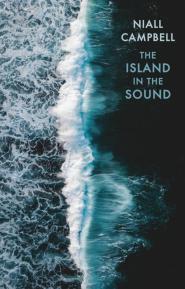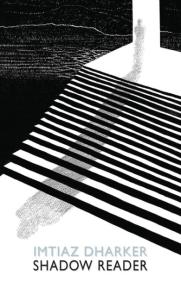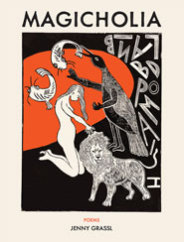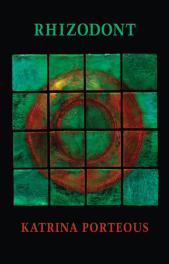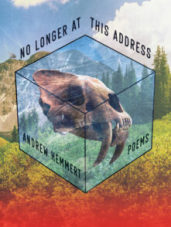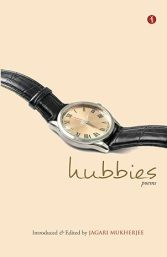
Niall Campbell, The Island in the Sound, Bloodaxe, 2024, ISBN 978-1-78037-721-6, 95pp, £12.
Niall Campbell’s three poetry collections have appeared at intervals of five years; it’s been worth waiting for this one, which revisits some previous preoccupations and introduces a new tone. Here are poems which pinpoint various types of ephemerality in the evolution and dissolution of ties and identities.
The sixty plus poems are structured into two sections, but are also shaped round two recurring motifs: Island sonnets, and six ‘Love letters from the Tenth Year of Marriage’ which begin, in medias res, with number 3 and end with number 8 (5 and 7 intriguingly absent – or maybe not yet conceived). Campbell shows brilliantly how the urgent storms of early passion are replaced with something more tender:
Darling, there’s a quietness to love now
which these letters go with and go against,
but you can see them … (LLTYM 8)
This mature love is also perfectly revealed in the exquisite ‘The Nine Billion Names’ where Campbell acknowledges his deficiencies when it comes to recognizing more than three constellations (which of us can do better?) but the number of names he can give to his wife has grown from one to
any one/of twenty …
The personal, the intricate, these variances
of privateness. Our treasury of naming.
Note the precision with which he avoids the expected ‘privacy’, his word-choice carrying a richer load.
The final poem of the collection represents perhaps a microcosm of the rest. We have already been made aware of the dual meanings of ‘Sound’ (and enjoyed some puns on the word, for example in ‘Lighthouse Keeper, Doubt’:
But even were I steering a beam of darkness
along an unlit stretch, I’d serve this sound.
‘The Sound’ discloses Campbell’s attention to the shifting, visceral ambiguities of the marine landscape, tethered to something broader, more enduring than the present moment. It is not ‘the snores of driftwood … or the corncrake in the small blacked-out cathedral /of collected thatch’ we hear but
your pulse responding to the frost,
Singing, like a second bird, from the gardens
Of your neck and wrist and breast.
He invokes ‘all the disappearing sounds of the world come back’ in a way which makes me wonder if he knows Helen Macdonald’s H is for Hawk, in which she reminds us that if all we know of the dodo is that it is extinct, we have already diminished its identity. Campbell manages to voice both universal and specific instances of lost identity – be it the Trojan War, the ‘secret garden’ in 1092, or the islands’ ancient people: the cocklepickers, egg gatherers, Lighthouse keepers; even
… those tenants,
who, once evicted, since wood was rare,
were free to take their doors with them.
There is so much more that I would like to comment on – the agility with which Campbell hops from one image to the next in ‘The Sparrow’s Legs’, for example but for now I’ll mention just three more striking features of a remarkable book; Campbell’s intertextuality, his spirituality, and the Island poems.
The two epigrams to the collection show the range of his inspiration; the opening poem places the poet in conversation with that great Catholic poet of faith and nature, Gerald Manly Hopkins, and Seamus Heaney helps us wrap up the collection in ‘The Windows’. A number of poems bear the epigram ‘After Laforge; Blake and Shakespeare get a look in; Ian Duhig and a handful of ‘Celtic’ and Gallic writers are also mentioned. It takes skill and maybe bravado to namecheck canonical greats; one feels that Campbell himself is (rightly) claiming his place in the canon.
It’s unusual these days to find poets writing about religious matters; references to spiritual and liturgical matters abound in this collection, acting as strong images rather than statements of faith. As a child he chose to stay home from Mass to light the fire:
I, too, was kneeling by the grate.
Young man tending the young fire
of his life. (‘First Fires’)
while his parents ‘stood in the psalm’s current/like waders gone out’ (‘Tongues of Water’).
Two men, swaying in a fight, are ‘like new candles in a church’; he does not need any ‘priest in snowy vestment’, but teases us in ‘Theology’ with an explanation of the soul as casked whisky (which we know has ‘an angel’s share’). The concept of eucharist (giving thanks) relates more, for Campbell, to the beauties of the natural world rather than any personal relationship with the divine; nestlings are ‘grass-chaliced’, ‘plain speckled eggs were imagined eucharist’ (‘The Death of the Birds’); the short poem ‘Windows’, with its Heaney epigram, notes that ‘First among the miracles was the laying hands on the blind.’ Perhaps what Campbell believes in is careful looking, seeing what is there.
The ‘island’ poems which punctuate the collection all take different variants of the sonnet form, the short form allowing for a sharp focus on detail. Each pays re-reading; I’ll end with a couple of lines from ‘Eriskay’ which epitomizes Campbell’s attentive eye (and nods to the nocturnal focus of previous collection):
Today, in the field’s breath,
I found where night sleeps through the daylight.
To order this book click here
Imtiaz Dharker, Shadow Reader, Bloodaxe 2024, ISBN 9781780377094, £12.99, 156pp.
I last encountered Imtiaz Darker’s poetry while reviewing Scottish Religious Poetry from the Sixth Century to the present edited by Linden Bicket, Emma Dymock and Alison Jack, for Dream Catcher Issue 50. I mention this because it was there I learned that Dharker ‘self-identifies as Muslim Calvinist’(corroborated to the blurb on the back of this current volume), growing up in a Lahori household in Glasgow, ‘adopted’ by India and married ‘into Wales.’ This poly-cultural background is richly reflected in images (both visual and verbal) of weaving.
It is an acknowledged feature of Dharker’s poetry books that they also include her own art work. It was striking how in this collection, these images often featured rows or lines, whether the obvious warp and weft of weaving (sometimes even shown in fabric, whose frayed edges suggest the liminality of which her words often speak), or in the suggestion of waves breaking on a shore, the structure of a feather, a collection of plant stems. Sometimes the rows are of handwritten words, versions of the poems that company them but minus the line breaks. This suggests that the pictures are there to be ‘read’ in conjunction with the poems.
I’m focusing on these visual prompts because Dharker’s method – revealed in such extra-verbal devices as well as her verse – is so strikingly present. With some poets (and I read and review a huge number, due to my editorship of Dream Catcher journal, in addition to the reviews I write for this journal), the message is so strident it can prevent the reader from appreciating the craft, the process of making (which is, after all, the root meaning of the word poetry.) In this collection, what stops you in your tracks, and makes you read and reread the poems is the attention to the mouth-feel of the words and lines, a sensuous generosity. To quote ‘Reader’ in its entirety:
You come to the books
to take you away, but they
open to welcome you home
and you stay.
Without ever needing to emphasise ‘tadum tadum’ (‘I walk in the Shadow’), every page catches you up in its rhythms; her use of rhymes within lines is delicious; her imagery fits like a favourite dress you had forgotten you owned. Space does not permit the number of examples I would need, in order to show the range of her skills: buy the book, and you will find the ones that speak to you most.
Structurally, the collection is deeply satisfying. Unlike many contemporary collections, there are no titled subsections, although the poems do sit in clusters, and the flow of longer poems is punctuated by haiku that read like gnomic proverbs. Another ‘shaping’ device is the interjection of poems addressed to or addressing the sinister ‘shadow reader’ of the title, who is told unambiguously in the closing words of the book to desist.
This attention to the craft of the ‘making’ is not to say that the messages of the poems are not also compelling. Here we have poems about belonging and exclusion; about being at the heart of things and being marginalised; the every-day and the extraordinary; about welcoming and being uncertain of receiving a welcome. The poet is ‘Ghosted by William Blake’; ‘Swipe[s] left on Larkin’; observes coercive behaviour on the Elizabeth Line; entertains demons from the Bhagavata Purana; engages with Queen Victoria’s consort dressed up in Indian clothes; challenges the narrative on a country ‘made of scars’; comes over all maternal about a hungry-looking minicab driver to whom she addresses the question about origin that we may not ask.
Here is poetry that is truly beguiling –not least because you want to read and reread each poem to mine the different layers. It is complex, without ever putting up any barriers. It can be devastatingly frank without being simplistic. It is funny, defiant, clever and tender writing. This is one book I am not lending to anyone; please buy your own copy!
To order this book click here
Hannah Stone is the author of Lodestone (Stairwell Books, 2016), Missing Miles (Indigo Dreams Publishing, 2017), Swn y Morloi (Maytree Press, 2019) and several collaborations, including Fit to Bust with Pamela Scobie (Runcible Spoon, 2020). She convenes the poets/composers forum for Leeds Leider, curates Nowt but Verse for Leeds Library, is poet theologian in Virtual Residence for Leeds Church Institute and editor of the literary journal Dream Catcher. Contact her on hannahstone14@hotmail.com for readings, workshops or book purchases.
Jenny Grassl, Magicholia, Three: A Taos Press, 2024, ISBN: 979-8990502703, $26.00, 98pp.
With lines often snaking around the page and word-spacing that makes some phrases appear as though floating on the page, with themes of magic and mental states, Jenny Grassl’s remarkable debut collection of poetry has the feel of dreams, the suspension of reality, in which the laws of physics no longer apply. Indeed, allusions to various fairy tales and myths convey the same impression. The very title of the book, Grassl’s own coinage, with its echo of “melancholia,” a medieval medical term for depression, also suggests a hallucinatory mental state and a non-traditional approach to addressing it (the root “holia” is an alternative form of “holy,” the sacred). The epigraph to Magicholia, from the novelist and surrealistic painter Leonora Carrington, says it all. “This is a love letter to nightmare.”
For grief is at the heart of Magicholia. Grassl writes in the collection’s penultimate poem, “Magicholia”:
my grief is a lantern to find burnt things
how can I speak of speech
I land at births of my own
children pushing apart my hips
crack me into two mothers
my dark child reaches
is this not joy
In several poems, Grassl uses “thick speech” to convey the distress of her narrators. These include “Pastimes of the Sane: Clayton Chooses a Prime Time Bride,” from part one, I. DRESSED TO FILL, which is based on the sorrows of the women competing in the season finale of the reality television show The Bachelor. In this TV series, a single man dates multiple women, to choose his favorite among them. In the poem, the line, “I don’t hate Clayton” (the man) is repeated again and again, and it’s less and less convincing with each repetition. The poem ends: “Susie is The One— fled brood hen clucken not yet fucken.” Two other women named Gabby and Rachel are the “losers.” But really, they are all lost.
“Tarot for Climate” from part two, II. MAGIC, in which the speaker is distressed by the effects of climate change, is another in which “thick speech” occurs (“sands thirsten beauty’s stumbling frock / lipped by ocean far from unturned outcome / promising some shimmy too shine O clime”). Finally, Grassl employs the style in “The Quiet Room,” from part four, IV. THE WELL, in which the speaker has been tossed into a padded room, a cell in a psychiatric hospital. She writes:
((((((((
how long will I been in here)))))))))
room herein—
quiet bricken
mortal mortar
the ones lacken family longer stayn
You can feel her panic. Titles like “The Manic Little Match Girl Turns Suicidal” (“her fleet of dreams does not keep her alive/ but does help her to die”), “Suicide Watch,” and “Hysteria Medicine” clue the reader into the fact that this is life-and-death stuff. One of the four sections that make up Magicholia in fact, is called “Hysteria.”
Grief is certainly at the heart of this third part, III. HYSTERIA. You only have to look at the treatment of female political candidates to realize how this accusation has plagued women through the centuries. In the hysteria section, Grassl teases out certain dark fairy tales to explore the grief implicit in the patriarchal fixation on “hysteria.” “Snow White in the Dolomite Mountains,” in which the girl is “saved” by the prince is one (“once I cough waking/ undoing his love spell/ he hurries me back to cloud/ does he know if I live again I will one day weather. overcast// snow mortal as bone…”); “Briar Rose as Hysteric at the End of the World” is another (“to wake a hundred years and then/ lie with the prince deeper than clothes…”). “Briar Rose” is the name of the Sleeping Beauty character in the Grimm fairytale.
“Wandering Womb as Cause of Hysteria” and “Hysteria Medicine” both consider the “treatment” for hysteria. In the first Grassl writes, “uterus problem doctors say” offering “hellebore / mint and laudanum” to “raise the golden pear / organ of menarche” or, indeed, “doctors offer themselves / healing sex smelling salts decoctions / of tamarind barley cassia pulp and lime / with belladonna leeches…”
In more modern times, as she writes in the second poem, it’s drugs like Aripiprazole and Zyprexa: “popcorn medicine chicken-fried outright outlandish medicine me delivered from clichés and evil pitter-patter of little pill feet…”
The poem, “A Landfill Dress Mourns,” from I. DRESSED TO FILL, is grief from the perspective of a discarded dress – “I am all that is left a dress rushed to ships bound for Chile” – but it tells the tale of a murdered woman.
The II. MAGIC section also channels fairytales. “Morozko (The Frost King) Asks, Are You Warm Child” is based on the Russian story of an evil stepmother. “Mania Diary: Plumed” features fenghuang, the mythological phoenix from Chinese literature. The poem, “Spell for Rescue in a Catastrophe—Be Prepared, Be Coifed,” from the III. HYSTERIA section, is an acrostic, its four stanzas repeating the pattern ABRA CADABRA.
In addition to being a poet, Jenny Grassl is an artist. Magicholia features several of her woodcut prints. A full-page black-and-white reproduction introduces each of the four sections, featuring naked human figures accompanied by various symbolic creatures, and the cover is likewise a gorgeous and intriguing color reproduction of one of her woodcuts. Magicholia provides a fresh perspective on mania and magic.
Charles Rammelkamp
To order this book click here
Charles Rammelkamp is Prose Editor for BrickHouse Books. His latest collection is The Trapeze Of Your Flesh (BlazeVOX Books).
